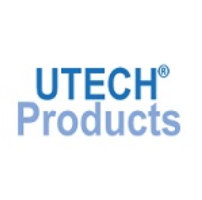$ 209.28
Details:
Familiarize Students With The Physical, Biological, And Chemical Processes Of A Wastewater Treatment Plant. In This Laboratory Investigation, Students Will Use The Wastewater Apparatus As A Model To Observe Simulations Of Primary, Secondary, And Tertiary Wastewater Treatment Processes. Through This Process, They Will Explore The Efficiency, Effectiveness, And Ecological Impact Of Various Treatment Models, Fostering A Deeper Understanding Of Sustainable Solutions For Managing And Purifying Wastewater. Includes Materials For 1 Group Of Students Or 1 Teacher Demonstration.Unit Connectionthis Laboratory Investigation Correlates To Unit 8: Aquatic And Terrestrial Pollution, Topic 8.11: Sewage Treatment In The Ap Environmental Science Course And Exam Description.Standards Connectionthis Addresses The Following Ap Environmental Science Concepts:Big Idea 4: Sustainability (Stb). Human Survival Depends On Developing Practices That Will Achieve Sustainable Systems. A Suitable Combination Of Conservation And Development Is Required. The Management Of Resources Is Essential. Understanding The Role Of Cultural, Social, And Economic Factors Is Vital To The Development Of Solutions.Stb-3 Human Activities, Including The Use Of Resources, Have Physical, Chemical, And Biological Consequences For Ecosystems.Stb-3.N Describe Best Practices In Sewage Treatment.Stb-3.N.1 Primary Treatment Of Sewage Is The Physical Removal Of Large Objects, Often Through The Use Of Screens And Grates, Followed By The Settling Of Solid Waste In The Bottom Of A Tank.Stb-3.N.2 Secondary Treatment Is A Biological Process In Which Bacteria Break Down Organic Matter Into Carbon Dioxide And Inorganic Sludge, Which Settles In The Bottom Of A Tank. The Tank Is Aerated To Increase The Rate At Which The Bacteria Break Down The Organic Matter.Stb-3.N.3 Tertiary Treatment Is The Use Of Ecological Or Chemical Processes To Remove Any Pollutants Left In The Water After Primary And Secondary Treatment.Stb-3.N.4 Prior To Discharge, The Treated Water Is Exposed To One Or More Disinfectants (Usually Chlorine, Ozone, Or Uv Light) To Kill Bacteria.Time Requirementsteacher Preparation (Before Class):Prelab: 10 Minutesinvestigation: Day 1 (At Least 1 Hour Before The Investigation), 45 Minutes; Day 2, 15 Minutesclass Time:Prelab: 15 Minutesinvestigation: Day 1, 70 Minutes; Day 2, 15 Minutesfree-Response Questions: 45 Minutesthe Times Provided Are Estimates. The Time Required May Vary Based On Your Student Population.Digital Resourcesincludes 1-Year Access To Digital Resources That Support Instruction. Digital Resources May Include Teacher Manual And Student Guide, Prelab Activities And Setup Videos, Simulations, And Postlab Analysis And Assessments.Prior Knowledge And Skillsstudents Should Be Familiar With The Following Skills Or Concepts:Freshwater As A Limited Resourcebasic Chemistry Concepts Such As Chemical Reactions, Solutions, Ph, And Chemical Propertiescauses And Effects Of Water Pollutionconventional Water Treatment Processesap Is A Trademark Registered And/Or Owned By The College Board, Which Was Not Involved In The Production Of, And Does Not Endorse, This Product. Investigations For Ap* Environmental Science: Wastewater Treatment: Sample Teacher'S Manual


